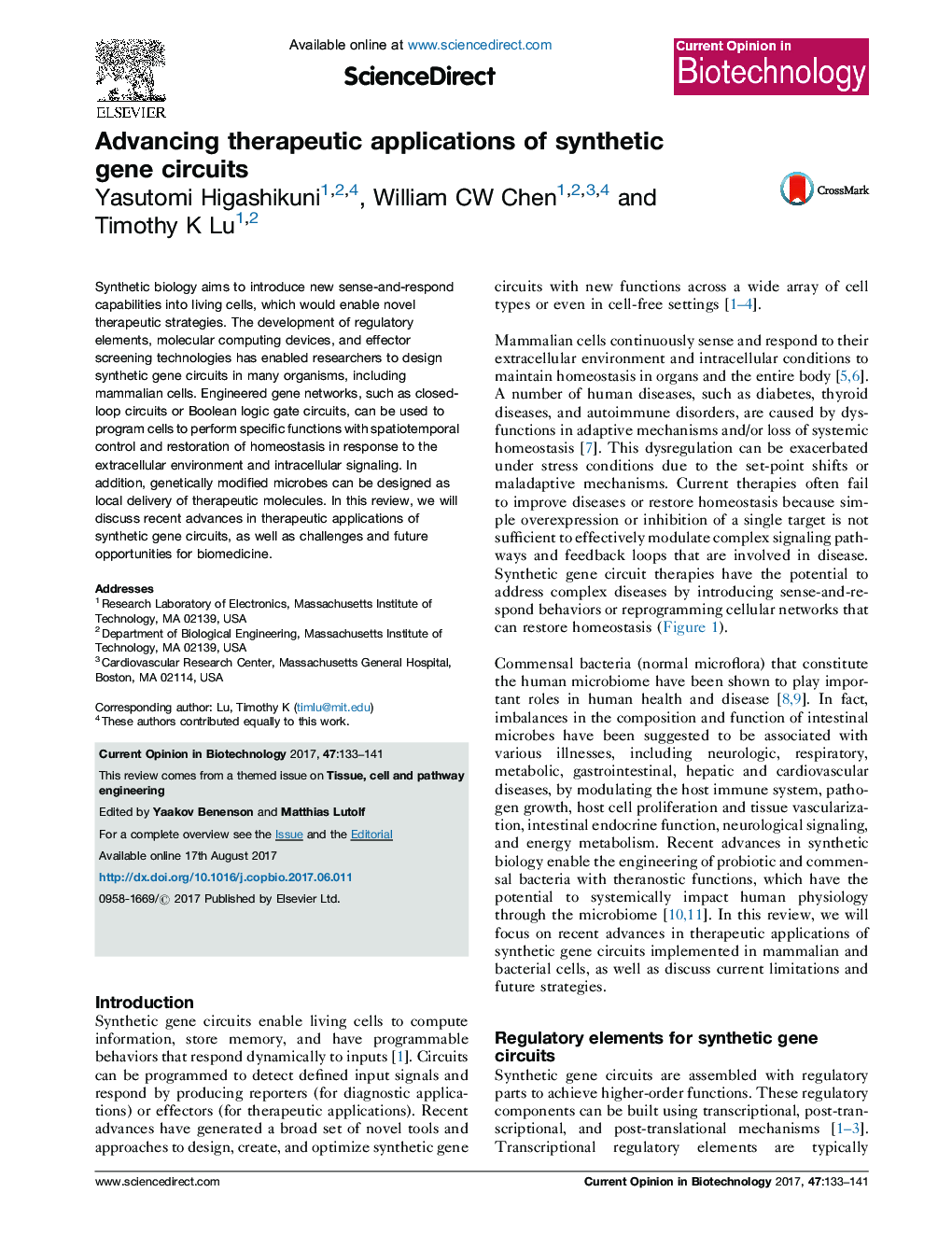| Article ID | Journal | Published Year | Pages | File Type |
|---|---|---|---|---|
| 6451434 | Current Opinion in Biotechnology | 2017 | 9 Pages |
â¢Various toolkits have been developed for building synthetic gene circuits in cells.â¢Engineered mammalian cells perform specific function with spatiotemporal precision.â¢Engineered bacteria work as a promising therapeutic option for human diseases.
Synthetic biology aims to introduce new sense-and-respond capabilities into living cells, which would enable novel therapeutic strategies. The development of regulatory elements, molecular computing devices, and effector screening technologies has enabled researchers to design synthetic gene circuits in many organisms, including mammalian cells. Engineered gene networks, such as closed-loop circuits or Boolean logic gate circuits, can be used to program cells to perform specific functions with spatiotemporal control and restoration of homeostasis in response to the extracellular environment and intracellular signaling. In addition, genetically modified microbes can be designed as local delivery of therapeutic molecules. In this review, we will discuss recent advances in therapeutic applications of synthetic gene circuits, as well as challenges and future opportunities for biomedicine.
Graphical abstractDownload high-res image (189KB)Download full-size image
